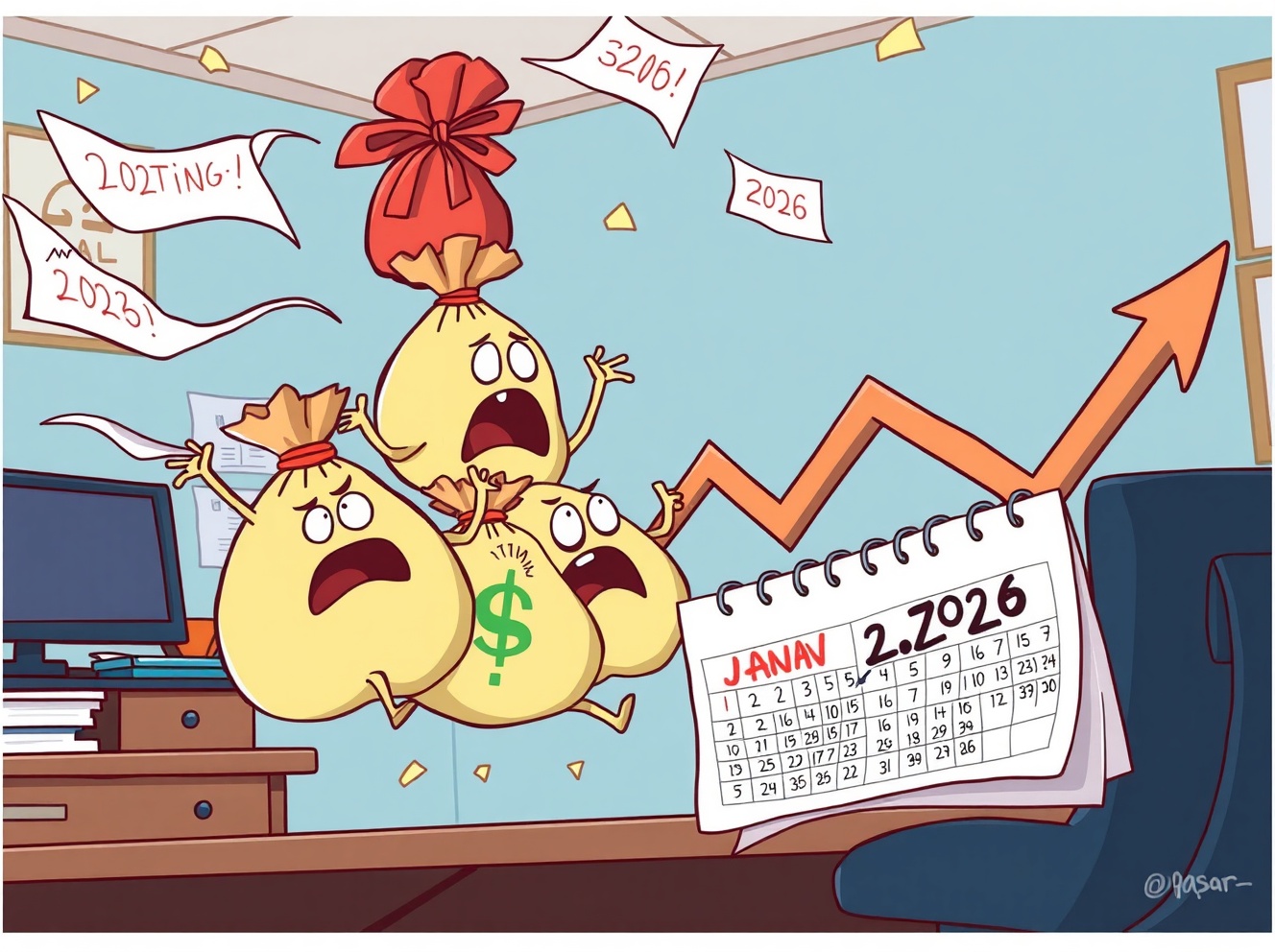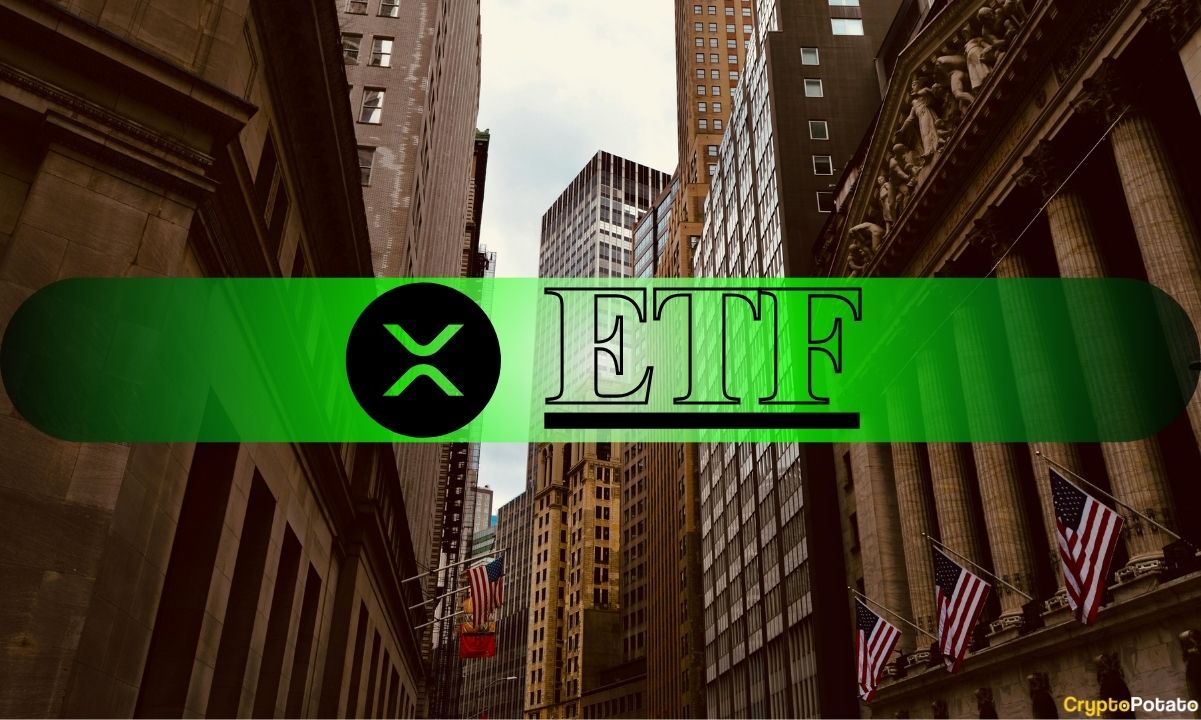
BitcoinWorld Critical Warning: MSCI Index Removal Could Trigger $2.8 Billion Strategy Exodus by 2026 Imagine waking up to discover your investment could face nearly $3 billion in outflows overnight. That’s the stark reality JPMorgan warns about regarding potential MSCI index removal consequences. The banking giant’s recent analysis reveals how index inclusion changes can dramatically reshape fund flows and investment landscapes. What Does MSCI Index Removal Mean for Investors? When a company faces MSCI index removal, institutional investors who track these indexes must sell their positions. This creates forced selling pressure that can significantly impact stock prices and fund flows. JPMorgan’s analysis specifically highlights how Strategy could experience substantial outflows if delisted from major indexes. The bank projects approximately $2.8 billion in immediate outflows if the MSCI index removal occurs. However, the situation becomes more concerning when considering broader implications. Index funds and ETFs that mirror MSCI compositions would be compelled to rebalance their portfolios, creating a domino effect across markets. How Severe Could the Financial Impact Be? JPMorgan’s warning extends beyond the initial $2.8 billion estimate. The bank suggests an additional $8.8 billion could exit if other index providers follow suit with their own delisting decisions. This represents a potential total outflow exceeding $11 billion, which would represent a substantial portion of Strategy’s market presence. The key factors driving this massive potential outflow include: • Passive investment tracking – Funds that automatically follow index compositions • Institutional rebalancing – Large-scale portfolio adjustments by major investors • Contagion effect – Other index providers potentially following MSCI’s lead • Market sentiment impact – Additional selling from nervous retail investors When Should Investors Prepare for This Scenario? Mark your calendars for January 15, 2026. This date represents the next scheduled MSCI index rebalancing, making it the crucial timeframe investors should monitor. While this seems distant, institutional investors typically begin positioning months in advance, meaning market impacts could materialize well before the actual date. The 2026 timeline provides both challenge and opportunity. Investors have time to assess their positions and develop contingency plans. However, it also means prolonged uncertainty as markets anticipate the potential MSCI index removal decision and its consequences. What Protective Measures Can Investors Take? Proactive investors should consider several strategies to mitigate potential MSCI index removal impacts. Diversification remains the cornerstone of risk management, ensuring no single index decision can disproportionately affect your portfolio. Additionally, monitoring institutional ownership patterns and fund flow data can provide early warning signals. Key protective measures include: • Portfolio rebalancing – Gradually adjusting positions before potential forced selling • Alternative investments – Exploring non-correlated assets to offset potential losses • Hedging strategies – Using options or other derivatives to protect against downside risk • Continuous monitoring – Staying updated on MSCI announcements and analyst reports Why Does This MSCI Index Removal Warning Matter Now? JPMorgan’s analysis serves as a crucial reminder that index composition changes represent significant market-moving events. The potential $2.8 billion outflow from MSCI index removal alone would rank among substantial financial market adjustments. When combined with possible additional outflows from other index providers, the total impact could reshape Strategy’s investor base and trading patterns. This situation underscores how passive investing trends have increased the importance of index inclusion decisions. As more capital flows into index-tracking funds, the consequences of MSCI index removal decisions become increasingly magnified across global markets. Conclusion: Navigating the Index Inclusion Landscape JPMorgan’s warning about potential MSCI index removal consequences highlights the evolving nature of modern investing. The days when index changes were minor footnotes have passed. Today, these decisions can trigger billion-dollar fund flows and significantly alter investment outcomes. While the January 2026 rebalancing provides time for preparation, informed investors should begin their assessment processes now rather than waiting for potential turbulence. The key takeaway remains clear: in today’s index-dominated investment world, understanding the implications of MSCI index removal decisions is no longer optional—it’s essential for portfolio protection and strategic planning. Frequently Asked Questions What triggers MSCI index removal? MSCI regularly reviews index components based on market capitalization, liquidity, and other qualification criteria. Companies that no longer meet these standards face potential removal during scheduled rebalancing periods. How quickly do outflows occur after index removal? Outflows typically begin immediately after the official removal date as index-tracking funds rebalance their portfolios. However, some anticipatory selling may occur in the weeks leading up to the change. Can companies recover after MSCI index removal? Yes, recovery is possible if the company addresses the issues that led to removal and requalifies for inclusion during future rebalancing periods. However, the process can take considerable time and fundamental improvement. Do all index providers make simultaneous removal decisions? No, different index providers have independent review processes and timelines. However, major providers often make similar decisions based on common qualification criteria. How can retail investors monitor potential index changes? Retail investors should follow announcements from major index providers, monitor analyst reports, and track institutional ownership changes through regulatory filings and financial news sources. What other consequences follow MSCI index removal beyond outflows? Additional impacts include reduced analyst coverage, decreased trading liquidity, higher volatility, and potential credit rating reviews as market visibility declines. Found this analysis crucial for understanding modern investment risks? Share this article with fellow investors on social media to help them prepare for potential index changes and protect their portfolios from unexpected market movements. To learn more about the latest investment strategy trends, explore our article on key developments shaping institutional investment future market positioning. This post Critical Warning: MSCI Index Removal Could Trigger $2.8 Billion Strategy Exodus by 2026 first appeared on BitcoinWorld .
Bitcoin World
You can visit the page to read the article.
Source: Bitcoin World
Disclaimer: The opinion expressed here is not investment advice – it is provided for informational purposes only. It does not necessarily reflect the opinion of BitMaden. Every investment and all trading involves risk, so you should always perform your own research prior to making decisions. We do not recommend investing money you cannot afford to lose.
Remarkable Crypto Treasury: Ripio’s $100 Million Digital Asset Strategy Revealed

BitcoinWorld Remarkable Crypto Treasury: Ripio’s $100 Million Digital Asset Strategy Revealed In a groundbreaking revelation that’s shaking up the Latin American financial landscape, cryptocurrency exchange Ripio has disclosed it holds an impressive $100 million crypto treasury. This strategic accumulation of digital assets positions the company as a major player in the region’s emerging crypto economy. But what does this massive crypto treasury mean for the future of digital finance in Latin America? How Did Ripio Build Its Massive Crypto Treasury? Ripio began its journey into digital asset accumulation back in 2017, demonstrating remarkable foresight in the volatile cryptocurrency market. The company systematically built its crypto treasury by focusing on established assets like Bitcoin and Ethereum. This long-term approach to crypto treasury management showcases the company’s confidence in the fundamental value of digital currencies. The strategic timing of their accumulation coincides with several market cycles, allowing Ripio to build its crypto treasury through both bull and bear markets. This disciplined approach to growing their crypto treasury highlights the company’s commitment to sustainable growth rather than speculative trading. Why Does This Crypto Treasury Matter for Latin America? Ripio’s substantial crypto treasury now ranks as the second-largest corporate holding in Latin America, signaling a significant shift in how regional businesses view digital assets. This achievement demonstrates: Institutional confidence in cryptocurrency as a store of value Regional leadership in digital asset adoption Strategic foresight in long-term crypto investment Market maturity in Latin American crypto space The company’s crypto treasury serves as a powerful endorsement of blockchain technology’s potential across emerging markets. Moreover, it establishes a new benchmark for corporate cryptocurrency adoption throughout the region. What Challenges Come With Managing a Large Crypto Treasury? Managing a $100 million crypto treasury presents unique challenges that Ripio has successfully navigated. Security remains paramount when handling such substantial digital assets. The company implemented robust security measures to protect its growing crypto treasury from potential threats. Market volatility represents another significant challenge. However, Ripio’s consistent accumulation strategy since 2017 demonstrates their ability to weather market fluctuations while steadily growing their crypto treasury. This approach has proven effective in building substantial value over time. How Can Other Companies Learn From Ripio’s Crypto Treasury Strategy? Ripio’s success with their crypto treasury offers valuable lessons for other companies considering digital asset investments. The key takeaways include: Start early and be consistent with accumulation Focus on established assets like Bitcoin and Ethereum Maintain long-term perspective beyond short-term volatility Implement strong security protocols from the beginning This strategic approach to building a crypto treasury demonstrates how companies can leverage digital assets for long-term financial strength. The success of Ripio’s crypto treasury management could inspire similar initiatives across Latin America and beyond. The Future Impact of Corporate Crypto Treasuries As more companies observe Ripio’s success with their substantial crypto treasury, we can expect increased corporate adoption of digital assets throughout Latin America. This trend could accelerate financial innovation and blockchain integration across various industries. The company’s crypto treasury achievement marks a significant milestone in the region’s financial evolution. It demonstrates how traditional business strategies can successfully incorporate emerging digital asset classes while maintaining financial stability and growth objectives. Conclusion: A New Era for Corporate Crypto Strategy Ripio’s $100 million crypto treasury represents more than just financial success—it symbolizes a fundamental shift in how companies approach asset management in the digital age. This achievement validates cryptocurrency as a legitimate component of corporate treasury management and sets a powerful precedent for other businesses in emerging markets. The strategic accumulation of digital assets since 2017 demonstrates remarkable vision and could inspire a new wave of corporate crypto adoption throughout Latin America and beyond. Frequently Asked Questions What is a crypto treasury? A crypto treasury refers to a company’s strategic reserve of cryptocurrency assets held as part of their financial portfolio, similar to traditional cash reserves but in digital form. When did Ripio start building its crypto treasury? Ripio began accumulating digital assets for its crypto treasury in 2017, demonstrating long-term commitment to cryptocurrency investment. Which cryptocurrencies does Ripio hold in its treasury? The company primarily holds Bitcoin and Ethereum in its crypto treasury, focusing on established digital assets with proven track records. How does Ripio’s crypto treasury rank in Latin America? Ripio’s $100 million crypto treasury is currently the second-largest corporate cryptocurrency holding in Latin America. Why do companies maintain crypto treasuries? Companies maintain crypto treasuries for diversification, inflation hedging, and to participate in the growing digital economy while potentially generating returns. What security measures protect large crypto treasuries? Large crypto treasuries typically use cold storage, multi-signature wallets, and institutional-grade security protocols to protect digital assets. Found this insight into corporate crypto strategy valuable? Share this article with your network on social media to spread awareness about the growing importance of crypto treasuries in modern business finance. Your shares help educate others about this exciting development in digital asset management! To learn more about the latest crypto treasury trends, explore our article on key developments shaping cryptocurrency institutional adoption. This post Remarkable Crypto Treasury: Ripio’s $100 Million Digital Asset Strategy Revealed first appeared on BitcoinWorld . Bitcoin World

Can XRP Hit $1,000? Analyst Weighs In Amid ETF Launches
The idea that XRP could one day trade at $1,000 may sound far‑fetched . But recent developments and bullish commentary have reignited serious discussion in the crypto community. Among the most provocative voices is analyst‑creator Skipper. His recent clip on his X handle argues that under certain conditions XRP could reach that lofty figure—though with the strong caveat: “this is purely speculative, so do not take this as gospel.” The ETF Catalyzer: Institutional Access Arrives Skipper’s thesis centers around the imminent launch of multiple spot‑XRP exchange‑traded funds (ETFs) in the U.S. market. Recent reporting confirms that a series of ETF issuers—including Bitwise Asset Management—filed Form 8‑A amendments and are scheduled to go live around 20 November 2025. How fast could XRP reach $1000? With #XRP ETFs potentially launching in the next 7 days, its price is expected to increase. pic.twitter.com/0xgRbCGduq — Skipper | XRPL (@skipper_xrp) November 20, 2025 These vehicles provide regulated access to XRP for institutions and retail alike. One report estimates the first wave could draw $4 billion – $8 billion in year‑one inflows . This aligns with Skipper’s framing: “There are a lot of analysts out there talking about it, there are a lot of reasons that it can happen.” Tokenomics, Supply and Demand Dynamics For XRP to approach $1,000, Skipper emphasizes a three‑fold scenario: inflows via ETFs, restricted circulating supply, and broader utility adoption. ETF seed purchases tighten available supply, while institutional accumulation could transform the token from speculative altcoin to mainstream asset. Historical patterns in crypto (e.g., Bitcoin’s ETF‑driven rallies) reinforce the idea that infrastructure launch does not guarantee immediate parabolic price moves—but can provide a structural runway. Timeline: When Could We See It? Skipper provides time‑based scenarios. He speaks of “projected timelines” for serious price movement once ETF access opens. With ETF launches kicking off mid‑November 2025, the earliest meaningful institutional conversion may unfold across late 2025 into 2026. We are on X, follow us to connect with us :- @TimesTabloid1 — TimesTabloid (@TimesTabloid1) June 15, 2025 Yet reaching $1,000 would likely require a sustained multi‑year cycle, not an overnight jump. It depends on cumulative capital, ecosystem expansion, and macro‑tailwinds aligning sequentially. Risks and Headwinds: Why $1,000 Is No Guarantee Despite the bullish thesis, key hurdles remain. ETF launches do not guarantee immediate inflows nor push the token price singularly to the moon. Analysts caution XRP holders to treat the launch as an important infrastructure milestone, instead of an automatic price catalyst . Further, the macro environment, regulatory shifts, and utility adoption will all play critical roles. Skipper himself emphasized: “This is purely speculative.” In sum, Skipper presents the $1,000 XRP scenario as a possibility rather than a prediction. The launch of spot‑XRP ETFs introduces new institutional pathways and could pivot the token into a higher adoption regime. Nevertheless, for XRP to reach $1,000, a rare alignment of demand, scarcity, and utility is required—and time is likely the most crucial variable. Disclaimer: This content is meant to inform and should not be considered financial advice. The views expressed in this article may include the author’s personal opinions and do not represent Times Tabloid’s opinion. Readers are advised to conduct thorough research before making any investment decisions. Any action taken by the reader is strictly at their own risk. Times Tabloid is not responsible for any financial losses. Follow us on Twitter , Facebook , Telegram , and Google News The post Can XRP Hit $1,000? Analyst Weighs In Amid ETF Launches appeared first on Times Tabloid . Bitcoin World











